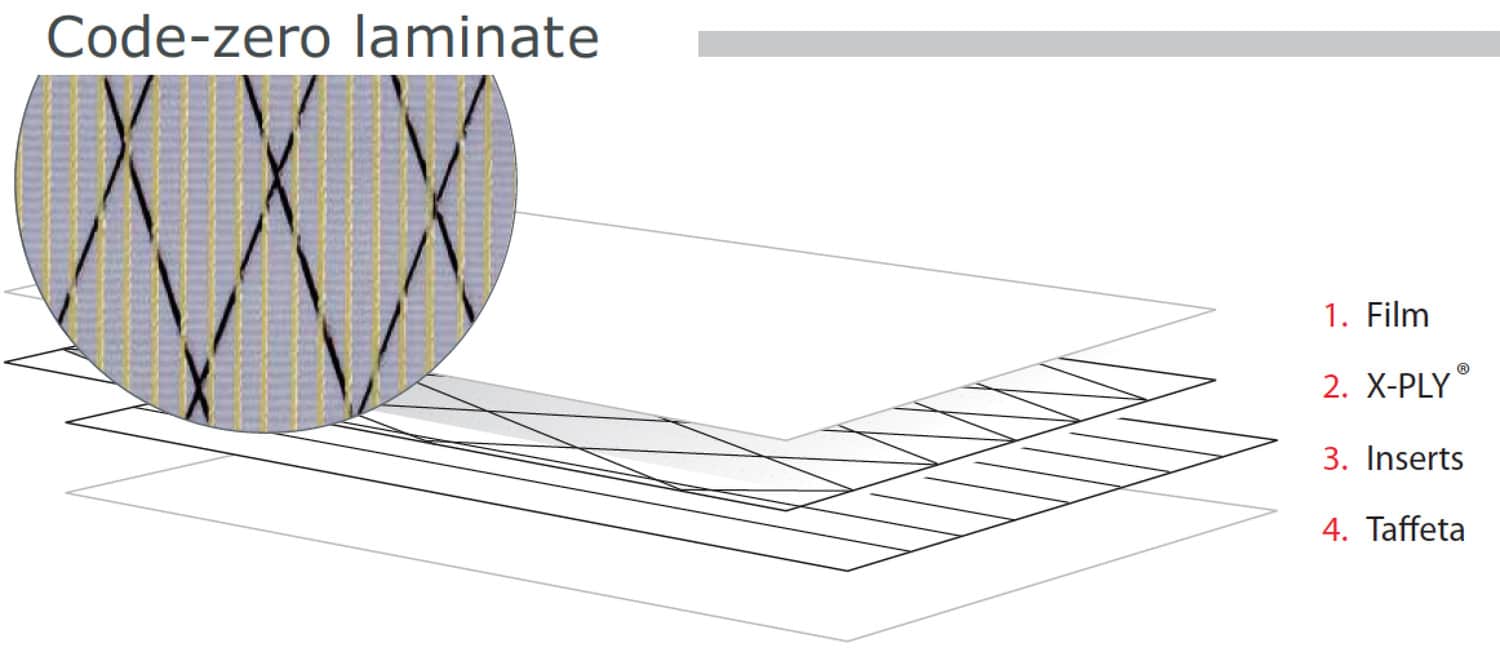
Asymmetrical Spinnakers: Code Zero Light Air Reaching
AWA 45-70°
AWS 0-10 knots
Mid Grith 75% of foot
Light Code Zero Laminate
The Code Zero was intended to provide the power of an overlapping genoa for reaching on boats that were rated as having non-overlapping jibs. When sailing upwind the efficiency of high aspect sail plans made the rating credit of not having an overlapping genoa worthwhile. The problem was when boats that were optimized for windward-leeward races went distance racing. In distance races most legs are reaches. Boats with non-overlapping jibs have a big hole in their sail inventory between the jib and their flattest spinnaker. The Code Zero was an ingenious workaround that built a very flat sail for reaching that worked like an overlapping reaching jib but measured as a spinnaker. To be categorized as a spinnaker, the mid-girth measurement has to be at least 75% of the foot length.

Code Zeros are a must for distance racing on modern boats with non-overlapping headsails. Boats with small jibs are at a major disadvantage when jib reaching — conditions when it is too close to carry a spinnaker, but the boat is not hard on the wind. Boats with overlapping genoas can get a lot more speed when they ease out their big genoas and they have the option of changing to an overlapping high-clewed jib top. Boats with non-overlapping jibs don’t have enough sail area for reaching.


The Code Zero is more than twice the size of a non-overlapping genoa. The pictures above show the same boat sailing with a jib and her Code Zero. Code Zeros takes the place of a high-clewed overlapping jib top.
HOW THE CODE ZERO GOT ITS NAME
Racing spinnakers have a number coding where odd numbers designate reaching spinnakers and even numbers are for running spinnakers; e.g., Code 1 for a light air reacher, Code 2 for medium air runner, Code 3 for medium/heavy reacher, etc. Those codes were already in place the Code Zero was invented by the sailmakers for the 1997 Whitbread Round the World Race winner EF LANGUAGE. Since they created a sail for closer reaching than Code 1, the new sail jumped in front and was named Code Zero.

Furler Options
There are three different methods for controlling a Code Zero. For boats 33 feet and smaller, sails are small enough that a furler is not necessary. For mid-sized boats 33-44 feet, a simple direct furler is the best option; for boats over 42 feet, you’ll need a top-down furler to handle the Code Zero, which is getting quite big. There are many different companies making innovative furling units for Code Zeros. Talk to your local UK Sailmakers representative to find out which one will work best for your boat and budget..
Top-Down furlers work better with large Code Zeros and asymmetrical spinnakers because they roll up the roach and upper leech first. By rolling up the top of the sail first, the rest of the sail becomes blanked by the mainsail and as a result rolls up very tightly. Having a tight roll allows the sail to unroll better and a tight roll presents less windage so that it can be raised sooner without hurting your sailing performance.



